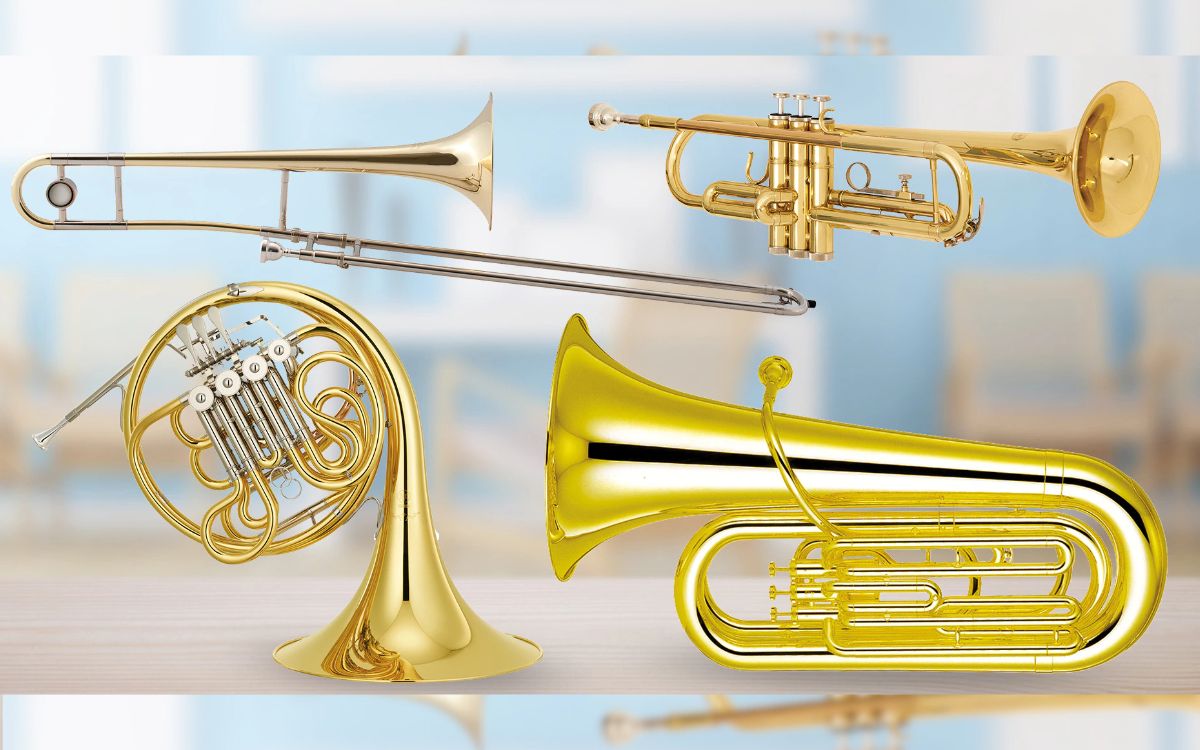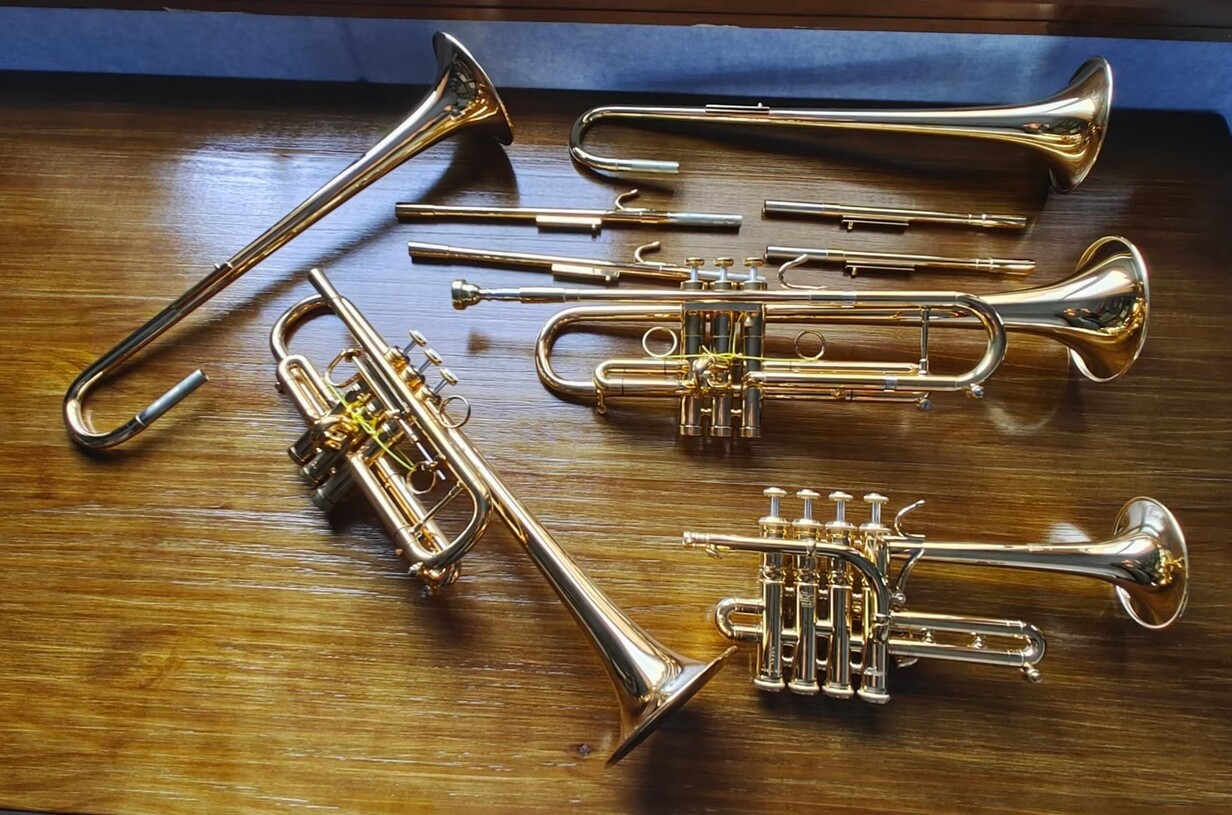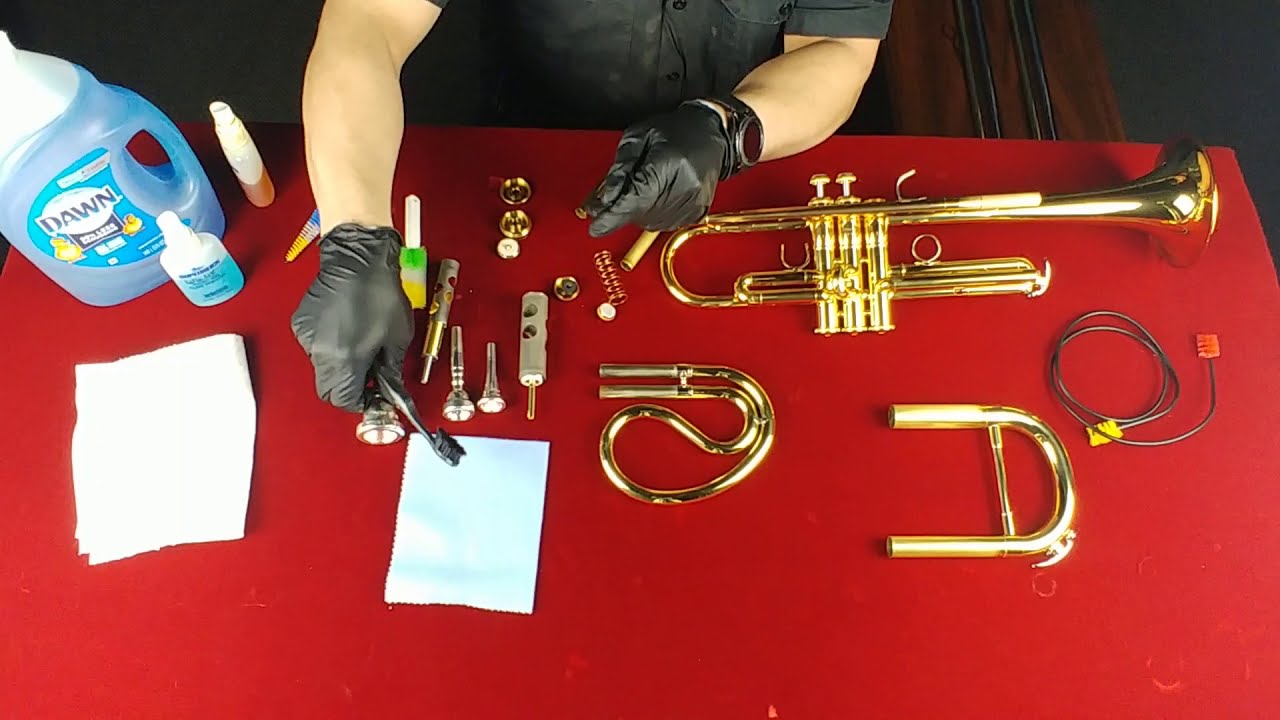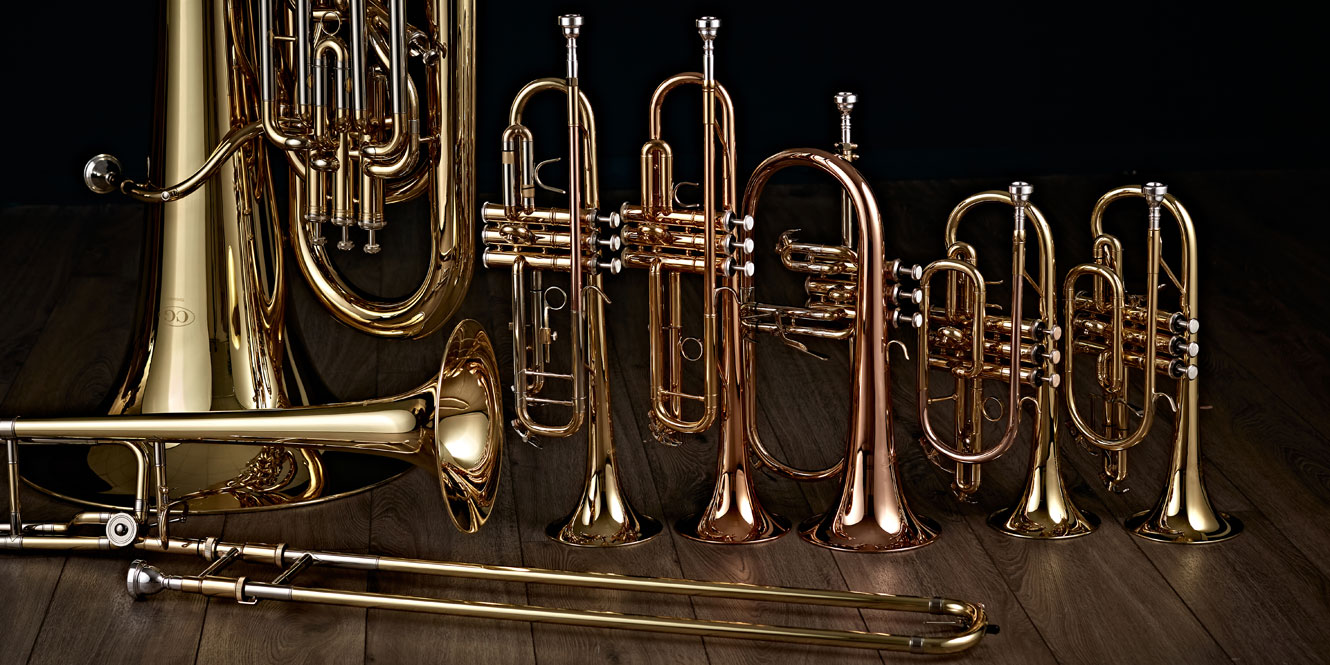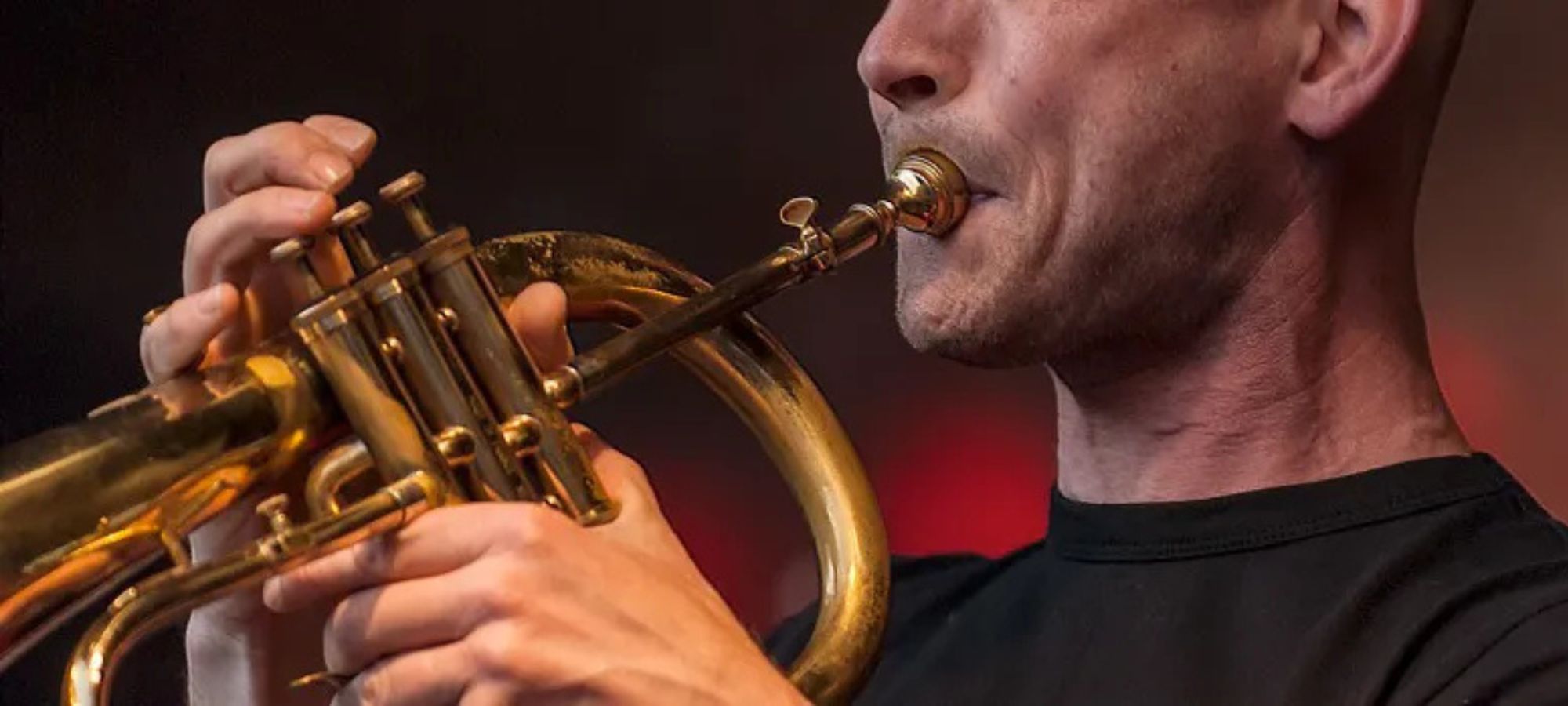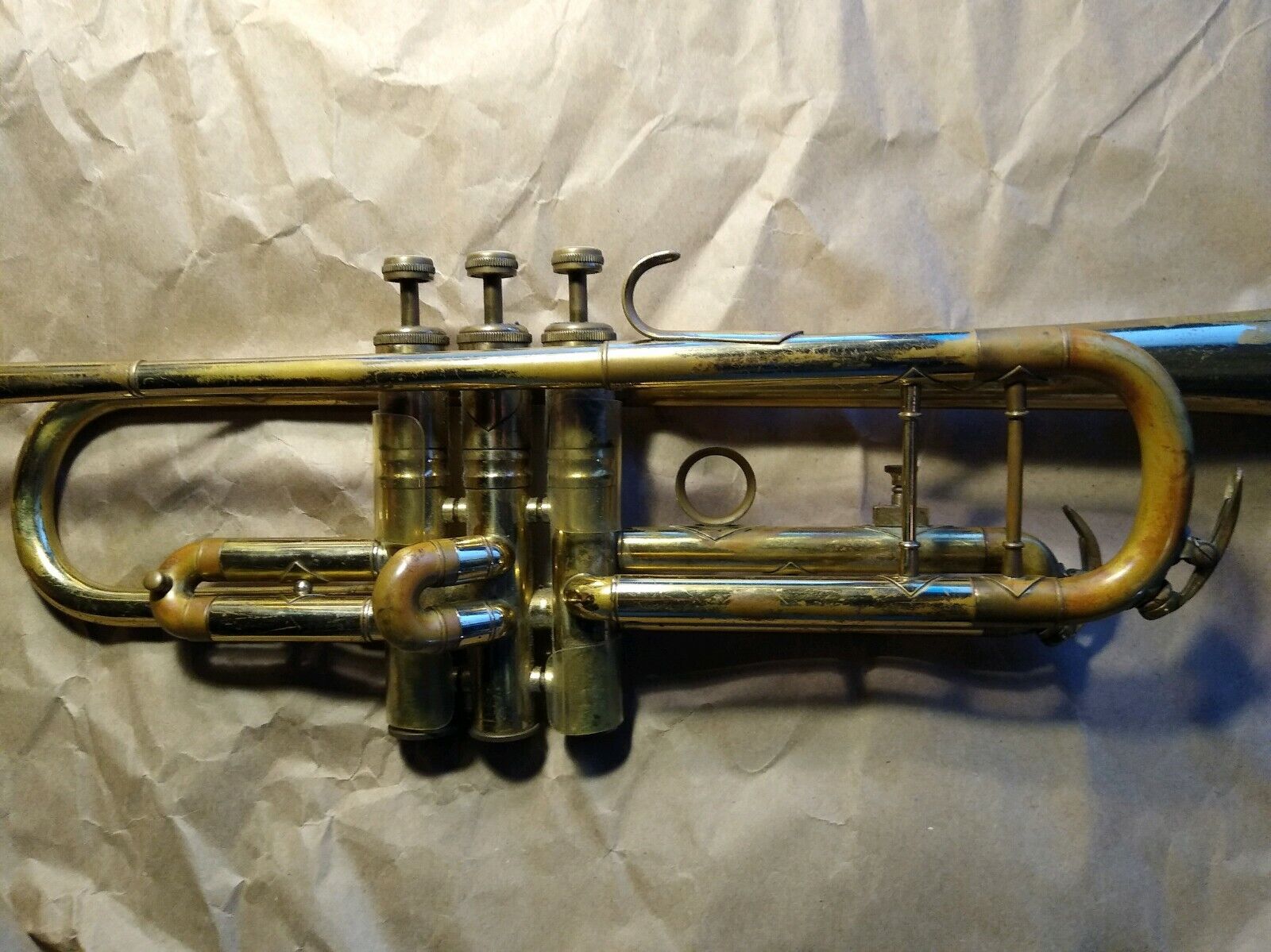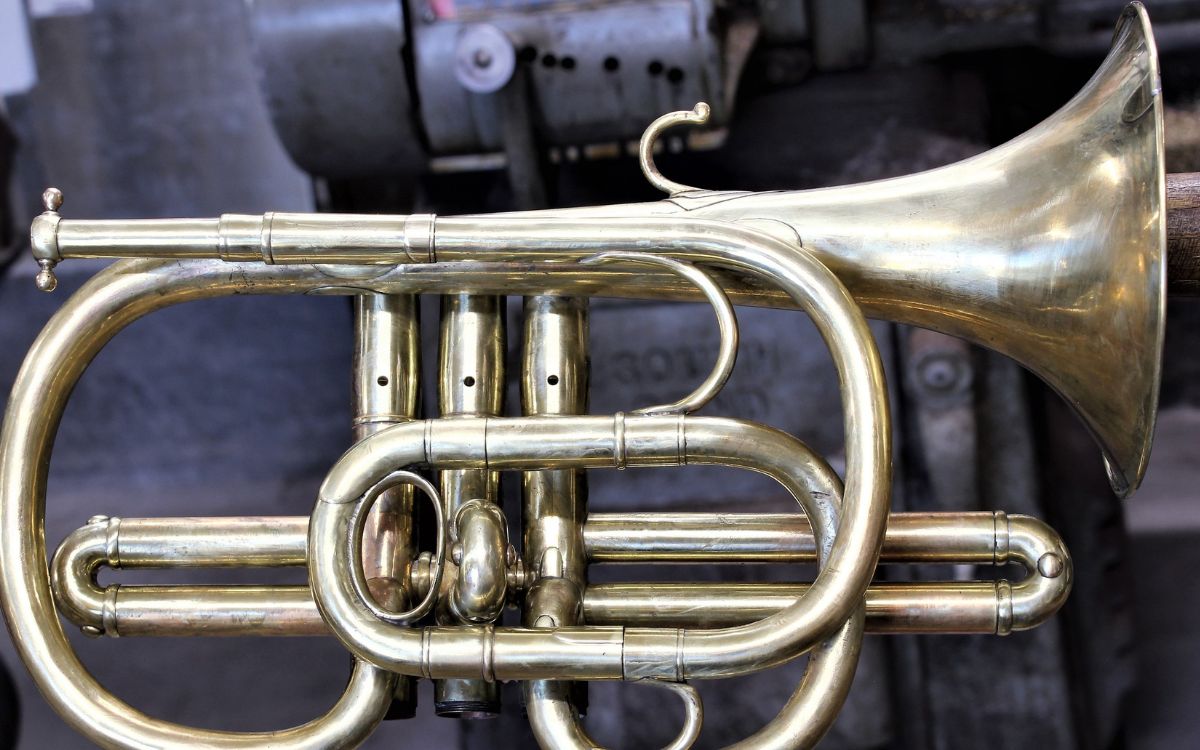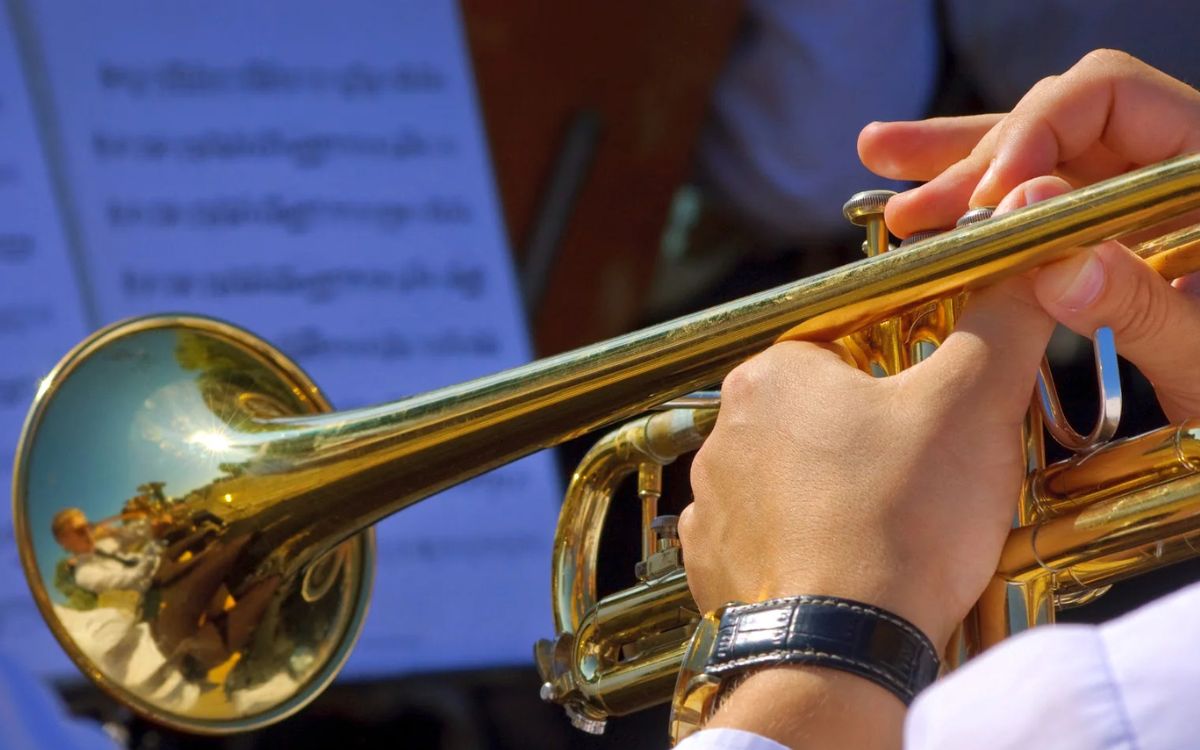Home>Instruments>Brass Instruments>Why Is A Mouthpiece Needed For Brass Instruments
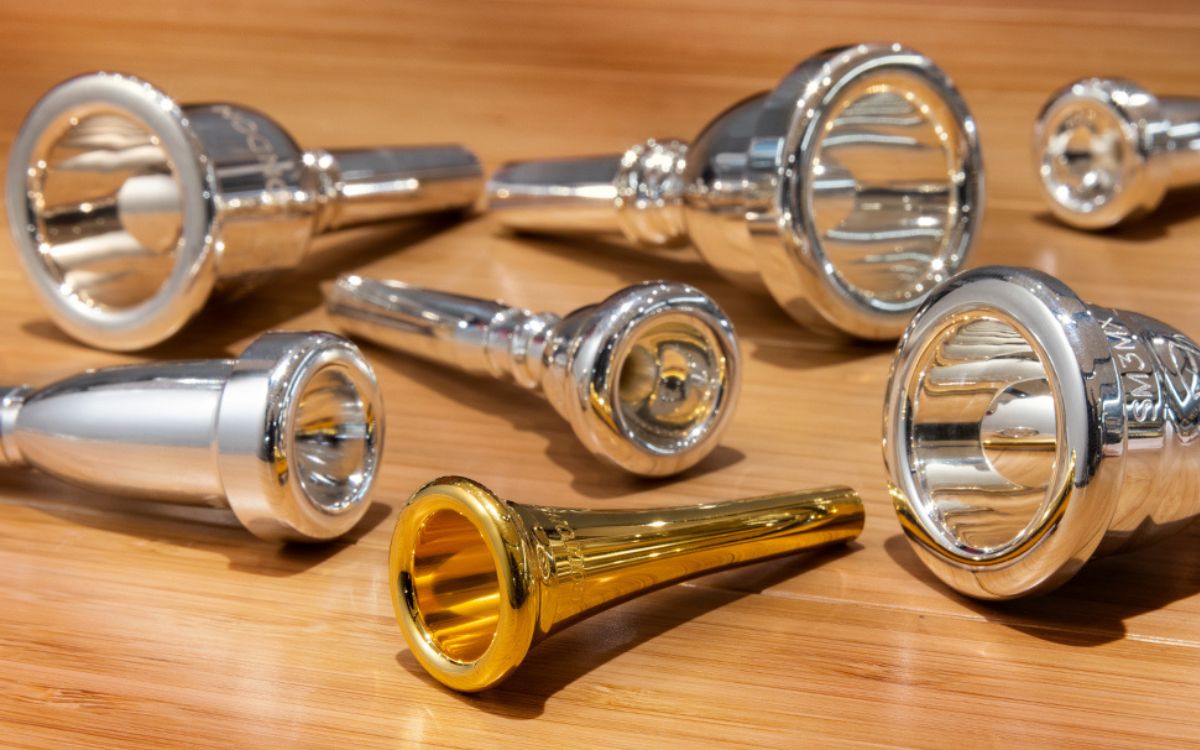

Brass Instruments
Why Is A Mouthpiece Needed For Brass Instruments
Modified: January 22, 2024
Discover why mouthpieces are crucial for brass instruments and how they impact sound quality. Explore the importance of choosing the right mouthpiece for your brass instrument.
(Many of the links in this article redirect to a specific reviewed product. Your purchase of these products through affiliate links helps to generate commission for AudioLover.com, at no extra cost. Learn more)
Table of Contents
- Introduction
- Anatomy of Brass Instruments
- How Brass Instruments Produce Sound
- The Role of the Mouthpiece
- Importance of the Mouthpiece in Brass Instrument Playing
- Different Types and Designs of Mouthpieces
- Factors to Consider When Choosing a Mouthpiece
- Maintenance and Care of Brass Instrument Mouthpieces
- Conclusion
Introduction
Brass instruments have a rich history and a distinctive sound that has captivated audiences for centuries. From trumpets and trombones to French horns and tubas, these instruments play a crucial role in various musical genres, from classical and jazz to brass bands and orchestras. While the beauty of music produced by brass instruments is often attributed to the skill of the musician, another essential component plays a significant role: the mouthpiece.
The mouthpiece is an integral part of a brass instrument, serving as a crucial link between the player and the instrument itself. It is a small, detachable component that is attached to the leadpipe or mouthpiece receiver of the instrument. Despite its seemingly simple appearance, the mouthpiece plays a vital role in shaping the sound, tonal quality, and playability of the instrument.
In this article, we will explore the anatomy of brass instruments, how they produce sound, and delve into the importance of the mouthpiece in brass instrument playing. We will also explore the different types and designs of mouthpieces available and provide guidance on choosing the right one for your instrument and playing style. Lastly, we will discuss proper maintenance and care of brass instrument mouthpieces.
Whether you are a beginner starting your journey into the world of brass instruments or an experienced player looking to refine your sound, understanding the importance of the mouthpiece is essential. So, let’s dive in and discover why the mouthpiece is a crucial component of brass instruments.
Anatomy of Brass Instruments
Before delving into the importance of the mouthpiece, it’s essential to have a basic understanding of the anatomy of brass instruments. Brass instruments typically consist of four main parts: the mouthpiece, the leadpipe, the body, and the bell.
The mouthpiece, as mentioned earlier, is the small detachable component that players blow into. It is made of brass or other metals and has a cup-shaped design that fits against the player’s lips.
The leadpipe is the section of tubing that connects the mouthpiece to the body of the instrument. It plays a vital role in transmitting the sound vibrations produced by the player’s lips into the instrument.
The body of the instrument is composed of various tubing sections, usually coiled or bent, that allow the sound to travel through the instrument. The length and diameter of the tubing determine the pitch and timbre of the instrument.
At the end of the tubing, there is a flared bell. The bell amplifies and projects the sound produced by the instrument, giving it its characteristic bright and resonant tone.
Each brass instrument may have slight variations in its anatomy, but the fundamental structure remains the same. Understanding the basic anatomy of brass instruments sets the foundation for comprehending how they produce sound and the role of the mouthpiece in this process.
Now that we have a clear understanding of the anatomy of brass instruments, let’s explore how these instruments produce sound and the specific role the mouthpiece plays in this intricate process.
How Brass Instruments Produce Sound
Brass instruments produce sound through a combination of the player’s skillful manipulation of their lips and the resonance of the instrument itself. The process begins with the player buzzing their lips against the mouthpiece, creating vibrations.
When the player blows air into the instrument, these buzzing lips create pressure waves that travel through the leadpipe and into the body of the instrument. As the waves move through the tubing, they interact with the different lengths and shapes, which determines the pitch and tone of the sound produced.
As the sound waves reach the bell of the instrument, they bounce off the walls of the bell and resonate, amplifying the sound and giving it its characteristic projection and timbre.
The mouthpiece plays a crucial role in this process by acting as a bridge between the player’s buzzing lips and the instrument. It helps to focus and shape the vibrations created by the lips, influencing the overall sound of the instrument.
When the player presses their lips against the mouthpiece, they create a seal that allows for precise control of the vibrating air column. The shape and depth of the mouthpiece cup also affect the airflow and the resonance of the instrument.
By adjusting the tension of the lips and the airflow, brass instrument players can produce different pitches, dynamics, and nuances in their sound. The mouthpiece acts as a tool that allows players to achieve the desired level of control and expression.
Now that we understand how brass instruments produce sound and the role of the mouthpiece in this process, let’s explore why the choice of mouthpiece is crucial for brass instrument players.
The Role of the Mouthpiece
The mouthpiece in brass instruments plays a crucial role in shaping the sound, playability, and overall performance of the instrument. It acts as the intermediary between the player and the instrument, influencing various aspects of the sound produced.
One of the primary roles of the mouthpiece is to facilitate efficient airflow and proper lip placement. The design of the mouthpiece cup and rim helps players achieve a comfortable and secure fit against their lips, allowing for optimal control and technique.
The size and shape of the cup affect the timbre and projection of the sound. A deeper cup produces a richer, darker tone, while a shallower cup provides a brighter, more focused sound. Players choose mouthpieces with specific cup characteristics based on their preferred sound quality and playing style.
The diameter and shape of the rim are also crucial factors. A wider rim may provide more support and stability for the player’s embouchure, while a narrower rim allows for greater flexibility and agility. The rim’s contour can also affect the contact area between the player’s lips and the mouthpiece, influencing the overall comfort and response.
Another important aspect of the mouthpiece is the throat and backbore. The throat is the narrowest part of the mouthpiece, and its size affects the resistance and airflow. A larger throat diameter can provide more resistance, allowing for better control and a focused sound. On the other hand, a smaller throat diameter offers less resistance, resulting in a freer blowing and potentially brighter sound.
The backbore, located behind the throat, further influences the airflow and resonance of the instrument. A more open backbore can enhance the instrument’s projection and create a more vibrant sound, while a tighter backbore may provide more stability and control.
Brass instrument players often experiment with different mouthpieces to find the one that suits their individual needs and preferences. The mouthpiece choice can vary depending on the player’s skill level, musical style, instrument type, and personal sound goals.
In summary, the mouthpiece plays a pivotal role in determining the sound, playability, and overall performance of brass instruments. Its design and characteristics influence the tonal quality, projection, and control that players can achieve. It is a vital tool that allows brass instrument players to express their musicality and create a unique sound signature.
Importance of the Mouthpiece in Brass Instrument Playing
The mouthpiece is of utmost importance in brass instrument playing for several reasons. It directly affects the sound quality, playability, and overall performance of the instrument. Here are some key points elaborating on the significance of the mouthpiece:
1. Sound Quality: The mouthpiece has a significant impact on the tone and resonance of the instrument. By selecting a mouthpiece with the right cup depth, diameter, throat, and backbore, players can achieve the desired sound characteristics. Whether they aim for a warm and mellow tone or a bright and vibrant timbre, the mouthpiece choice is crucial in shaping the instrument’s sound.
2. Articulation and Projection: The mouthpiece plays a crucial role in achieving accurate articulation and projection. The design of the cup and rim impacts the player’s ability to articulate clean and precise notes. Additionally, a well-suited mouthpiece aids in projecting the sound, allowing players to be heard clearly and distinctly, whether performing in a small ensemble or a large concert hall.
3. Comfort and Endurance: A properly fitted and well-designed mouthpiece enhances comfort and endurance during long playing sessions. The rim contour, diameter, and overall mouthpiece shape can greatly influence the player’s embouchure and reduce fatigue. When a player feels comfortable and supported by their mouthpiece, they can maintain better control and sustain the quality of their sound throughout a performance.
4. Flexibility and Range: The mouthpiece choice also affects a player’s ability to explore the instrument’s full range and achieve various dynamic levels. The cup shape and depth, as well as the throat and backbore, can impact the instrument’s responsiveness and resistance. A well-chosen mouthpiece allows for improved flexibility and facilitates smooth transitions between registers.
5. Personal Expression: Each brass instrument player has their unique sound and musical style. The mouthpiece serves as a tool for personal expression, allowing players to shape and refine their individual sound signature. By experimenting with different mouthpiece options, players can find the one that resonates with their musical vision and allows them to fully express their artistic voice.
Overall, the mouthpiece plays a vital role in brass instrument playing, influencing the sound quality, playability, endurance, and personal expression of the musician. Choosing the right mouthpiece is a highly personal decision that requires careful consideration of various factors. It is worth investing time and effort in finding a mouthpiece that enhances the player’s abilities and brings out the true potential of their instrument.
Different Types and Designs of Mouthpieces
There is a wide variety of mouthpieces available for brass instruments, each with its unique design characteristics and intended use. Here are some of the different types and designs of mouthpieces commonly used:
1. Standard Mouthpieces: These are the most commonly used mouthpieces and come in a range of sizes suitable for various brass instruments. They typically have a medium cup depth and rim width, providing a balanced and versatile sound.
2. Deep Cup Mouthpieces: Deep cup mouthpieces have a larger cup volume, resulting in a darker and more mellow tone. These mouthpieces are often favored by players in orchestral settings, where a rich and resonant sound is desired.
3. Shallow Cup Mouthpieces: Conversely, shallow cup mouthpieces have a smaller cup volume, resulting in a brighter and more focused tone. They are popular among soloists and players seeking increased agility and brilliance in their sound.
4. V-Shaped Cup Mouthpieces: These mouthpieces have a V-shaped cup instead of the conventional U-shaped cup. They offer a unique tonal quality, typically providing enhanced brilliance and projection.
5. D-Shaped Cup Mouthpieces: D-shaped cup mouthpieces have a cup that resembles the letter “D” instead of a traditional U-shape. They can offer a unique blend of warmth and projection, often favored by players seeking a more distinct and individual sound.
6. Heavyweight Mouthpieces: Heavyweight mouthpieces are made of denser materials or feature additional weight distribution to increase the mass. These mouthpieces are known to provide enhanced projection and stability, often preferred by players in marching bands or brass ensembles.
7. Custom and Specialty Mouthpieces: Some players, particularly professionals or advanced players, may opt for custom-made mouthpieces. These mouthpieces are crafted to the player’s unique specifications, considering factors such as cup depth, rim contour, and throat/backbore combination. Specialty mouthpieces, such as those designed for jazz or specific genres, may also fall into this category.
It’s important to note that mouthpiece selection is highly personal and depends on factors such as the player’s skill level, instrument type, playing style, and personal preference. Experimentation and professional guidance can be valuable in finding the right mouthpiece that suits the individual player’s needs and goals.
Now that we’ve explored the different types and designs of mouthpieces, let’s move on to discuss the factors to consider when choosing a mouthpiece for your brass instrument.
Factors to Consider When Choosing a Mouthpiece
Choosing the right mouthpiece is a crucial decision for brass instrument players. It can greatly impact their sound, playability, and overall musical experience. Here are some important factors to consider when selecting a mouthpiece for your instrument:
1. Instrument Type: Different brass instruments require different mouthpiece sizes and designs. For example, a trumpet mouthpiece will not fit a trombone or a tuba. It is essential to choose a mouthpiece that is specifically designed for your instrument to ensure proper fit and optimal performance.
2. Cup Depth: Cup depth influences the overall sound quality. Deeper cup mouthpieces produce a darker and richer tone, while shallower cups result in a brighter and more focused sound. Consider the desired tone and style of music you play when selecting the cup depth.
3. Rim Width and Contour: The rim of the mouthpiece affects comfort and endurance. Wider rims may provide more stability and support for the lips, while narrower rims can offer increased flexibility and agility. Experiment with different rim widths and contours to find the one that suits your embouchure and playing style.
4. Throat Diameter: The throat diameter affects the resistance and airflow in the instrument. A smaller throat diameter offers less resistance and can provide a freer blowing experience, while a larger diameter may provide more control and precision. Consider your preferred playing style and comfort level when deciding on the throat diameter.
5. Backbore: The backbore is the part of the mouthpiece that connects the throat to the shank. Different backbore designs can influence the projection, intonation, and overall response of the instrument. Experiment with different backbore options to find the one that suits your specific needs and preferences.
6. Playing Experience and Skill Level: Consider your playing experience and skill level when selecting a mouthpiece. Beginners may opt for mouthpieces with a medium cup depth and wider rim for ease of playability, while advanced players may explore specialized designs that offer more control and customization.
7. Musical Style and Context: The musical style you play and the context in which you perform should also influence your mouthpiece choice. Different genres and performance situations may require specific tonal qualities or projection capabilities. Consult with experienced players or teachers in your musical community for guidance on mouthpiece selection for different playing contexts.
Remember, selecting a mouthpiece is a personal process, and what works for one player may not necessarily work for another. Don’t be afraid to experiment and try different mouthpieces to find the one that suits your unique needs and musical goals. Working closely with a knowledgeable brass instrument professional can provide valuable insights and guidance during the selection process.
Now that we understand the factors to consider when choosing a mouthpiece, let’s move on to discussing the importance of regular maintenance and care for brass instrument mouthpieces.
Maintenance and Care of Brass Instrument Mouthpieces
Maintaining and caring for your brass instrument mouthpiece is essential to ensure optimal performance and longevity. Here are some important tips to help you keep your mouthpiece in excellent condition:
1. Regular Cleaning: It is crucial to clean your mouthpiece regularly to remove dirt, residue, and bacteria that can accumulate over time. Use a mild soap or specialized mouthpiece cleaner and warm water for cleaning. Avoid using harsh chemicals or abrasive materials that can damage the surface of the mouthpiece.
2. Brushing and Soaking: Use a small, soft brush or a mouthpiece cleaning brush to scrub the inside and outside surfaces of the mouthpiece. Pay extra attention to the cup and rim areas, as these come into direct contact with the player’s lips. After brushing, soak the mouthpiece in warm, soapy water for a few minutes to further loosen any stubborn dirt or residue.
3. Rinse and Dry: After cleaning, thoroughly rinse the mouthpiece with clean, warm water to remove any remaining soap or debris. Shake off excess water and use a clean, lint-free cloth or towel to dry the mouthpiece thoroughly. Ensure that all moisture is removed to prevent the growth of mold or bacteria.
4. Avoiding Damage: Handle your mouthpiece with care to avoid any accidental drops or impacts that can cause chips, dents, or other damage. Store your mouthpiece in a protective case or pouch when not in use to prevent scratches and other damage that can affect its performance.
5. Regular Inspections: Periodically inspect your mouthpiece for any signs of wear, such as worn plating, loose shanks, or damaged rims. If you notice any issues, consult with a professional repair technician to assess and address the problem before it affects your playing experience.
6. Personal Hygiene: It is important to maintain good oral hygiene while playing a brass instrument. Brush your teeth and rinse your mouth thoroughly before playing to minimize the buildup of plaque or bacteria on the mouthpiece. This practice can help prolong the lifespan of your mouthpiece and ensure a clean and sanitary playing experience.
7. Avoid Sharing: It is advisable to avoid sharing your mouthpiece with others to prevent the spread of germs and maintain personal hygiene. Each player’s mouthpiece should be exclusively used by them to reduce the risk of infections or illnesses.
8. Professional Check-ups: Consider having your mouthpiece inspected and cleaned by a professional technician regularly. They can assess the condition of your mouthpiece and perform any necessary adjustments or repairs to maintain its optimal performance.
By following these maintenance and care practices, you can prolong the lifespan of your brass instrument mouthpiece and ensure consistent performance. Remember, a well-maintained mouthpiece contributes to the overall playability and sound quality of your brass instrument.
With a properly cared-for mouthpiece, you can continue to create beautiful music and enjoy your brass instrument for years to come.
Conclusion
The mouthpiece is an indispensable component of brass instruments, playing a crucial role in producing the unique and captivating sound that these instruments are known for. Understanding the anatomy of brass instruments and the process by which they produce sound allows us to appreciate the significance of the mouthpiece in the overall playing experience.
We have explored the various factors that make the mouthpiece important in brass instrument playing, such as its impact on sound quality, playability, comfort, and personal expression. The choice of mouthpiece is a highly individual decision, influenced by the player’s instrument type, skill level, musical style, and personal preference.
Additionally, we have discussed the different types and designs of mouthpieces available, ranging from standard mouthpieces to deep cup, shallow cup, V-shaped, and D-shaped cup designs. Each design offers unique attributes that can significantly impact the tone and playability of the instrument.
When choosing a mouthpiece, it is important to consider elements such as cup depth, rim width and contour, throat diameter, backbore, playing experience, and musical style. These factors help ensure a customized fit that enhances your playing experience and allows you to achieve your desired sound and performance goals.
Finally, maintaining and caring for your brass instrument mouthpiece is essential for preserving its performance and longevity. Regular cleaning, proper storage, and periodic inspections are key to keeping your mouthpiece in excellent condition and ensuring optimal playability.
By understanding the significance of the mouthpiece, making an informed choice, and taking proper care of it, brass instrument players can unlock their full potential and enjoy a rich, expressive, and captivating musical journey.
So, whether you are a beginner eager to explore the world of brass instruments or an experienced player looking to refine your sound, remember that the mouthpiece is a fundamental element that can truly make a difference in your playing experience. Embrace the versatility and uniqueness of the mouthpiece as you embark on your musical adventures with your brass instrument of choice.

